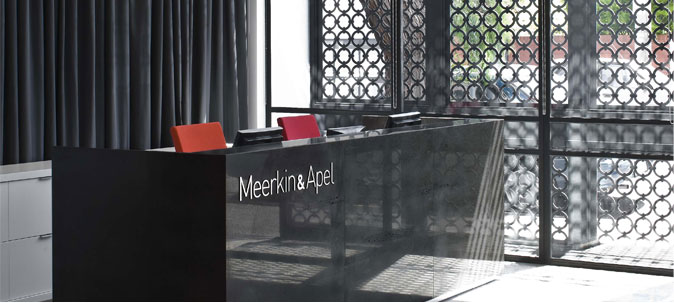High Court: BHP lawfully dismissed employee who waved “scab” sign at protest
21 October 2014
The High Court decision of Construction, Forestry, Mining and Energy Union v BHP Coal Pty Ltd[1] upheld BHP Coal’s dismissal of an employee and provided further guidance about how the general protection provisions in the Fair Work Act 2009 (C’th) (“FW Act”) will be interpreted by the Courts.
The BHP Coal case builds on the High Court’s 2012 decision of Board of Bendigo Regional Institute of TAFE v Barclay,[2] but unlike that case where the High Court’s decision was unanimous, in this case the High Court was split 3-2. In the course of this litigation, five judges supported BHP Coal and four judges decided in favour of the CFMEU.
Section 346 of the FW Act prohibits an employer from taking “adverse action” against an employee (including terminating their employment), “because” the employee engaged in industrial activity such as participating in lawful industrial activity organised by a union or representing or advancing the views or interests of a union.
The facts
In February 2012, workers at the Saraji Mine run by BHP Coal took protected industrial action in the form of a strike organised by the CFMEU. Mr Doevendans, a BHP Coal employee and CFMEU member, was not rostered to work but chose to take part in the lawful protest near the mine entrance. In doing so, he held up and waved a sign at passing motorists which read, “No principles SCABS No guts”. The sign had been supplied by the CFMEU.
Mr Doevendans’s conduct was investigated and his employment was terminated. The CFMEU brought a general protections claim, alleging that BHP Coal had taken “adverse action” by dismissing Mr Doevendans because he:
-
participated in lawful industrial activity organised by the CFMEU (section 347(b)(iii)); and
-
represented or advanced the CFMEU’s views, claims or interests (section 347(b)(v)).
The Federal Court’s first decision
In the original Federal Court case,[3] Jessup J accepted the evidence of Mr Brick, the general manager at the Saraji Mine, that the reasons for the dismissal were that:
-
the word “scabs” on the sign was “inappropriate, offensive, humiliating, harassing, intimidating and flagrantly in violation of BHP Coals workplace conduct policy (that policy required courtesy and respect to be accorded to fellow employees)”;[4]
-
Mr Doevendans was aware of the policy and demonstrated arrogance when confronted with the objections to his conduct; and
-
Mr Doevendans’s actions were inconsistent with the culture that Mr Brick was trying to develop at the mine.
Despite accepting that these were the true reasons for Mr Brick’s decision, Jessup J found that the dismissal was in contravention of subsections 347(b)(iii) and (v).
The Full Federal Court decision
BHP Coal appealed against Jessup’s J decision. The Full Bench of the Federal Court handed down a 2-1 majority decision in favour of the employer.[5]
The High Court appeal
The CFMEU appealed to the High Court. In a 3-2 decision, the High Court found that the dismissal was lawful. French CJ and Kiefel C wrote a joint decision in favour of BHP Coal and Gageler J wrote a separate judgment, in which he agreed with them. Hayne and Crennan JJ wrote two separate dissenting judgments.
French CJ and Kiefel J stated that section 346 did not require a Court to enquire whether the adverse action was connected with the industrial action protected by the FW Act. It required “a determination of fact as to the reasons which motivated the person who took the adverse action”.[6] The Barclay decision made it clear that it was “incorrect to conclude that, because the employee’s union position and activities were inextricably entwined with the adverse action, the employee was therefore immune, and protected, from the adverse action.”[7]
They said that Jessup J, having determined that Mr Brick’s reasons did not include Mr Doevendans’s participation in industrial action or his representing the views of the CFMEU, made an error by placing too much weight on the sign’s connection to the industrial activity.[8]
Gageler J, in a separate judgment in BHP Coal’s favour, said that “the totality of the operative and immediate reasons for BHP Coal having taken adverse action against Mr Doevendans were proved by the evidence of Mr Brick about his own process of reasoning.”[9] The fact that Mr Doevendans was participating in a protest organised by the CFMEU and the fact that the sign represented and advanced the views and interests of the CFMEU were not part of Mr Brick’s reasons for dismissal.
In his dissenting decision, Hayne J said that he accepted that the sign was offensive and abusive but said that the use of the word “scabs” cannot be “divorced from the circumstances in which it was used.”[10] He said that the Barclay decision did not establish that the acceptance of the decision-maker’s evidence about the reasons for the adverse action “necessarily concluded the issue in a case where the employee was engaged in industrial activity”.[11] He said that no distinction can be drawn between Mr Doevendans’s “participation in the protest near the entrance to the mine property and the manner in which he expressed his protest.”[12] He said that both were lawful. He concluded that Mr Brick’s dismissal of Mr Doevendans contravened subsections 347(b)(iii) and (v).
In dissent, Crennan J agreed with Hayne’s J reasons. She said, “Barclay does not hinder the drawing of available inferences which may controvert an honest decision‑maker's assertion that he or she did not take adverse action for any prohibited reason.”[13]
Lessons for Employers
This decision reaffirms the High Court’s approach in Barclay, showing that disciplinary action relating to an employee’s poor conduct can be justified, even when it is closely entwined with industrial activity or other workplace rights.
The evidence from the decision-maker about their reasons and the decision-making process will be critical if the matter is tested in Court, and the employer bears the onus of proving that the adverse action was lawful.
Managers should be trained to carefully implement disciplinary procedures, with an emphasis on documenting the steps taken and the reasons for decisions.
[1][2014] HCA 41
[2] [2012] HCA 32
[3]CFMEU v BHP Coal Pty Ltd (No 3) [2012] FCA 1218
[4] [2014] HCA 41, [3].
[5]BHP Coal Pty Ltd v CFMEU [2013] FCAFC 132
[6] [2014] HCA 41, [19].
[7] [2014] HCA 41, [20].
[8] [2014] HCA 41, [22].
[9] [2014] HCA 41, [90].
[10] [2014] HCA 41, [42].
[11] [2014] HCA 41, [38].
[12] [2014] HCA 41, [45].
[13] [2014] HCA 41, [68].





